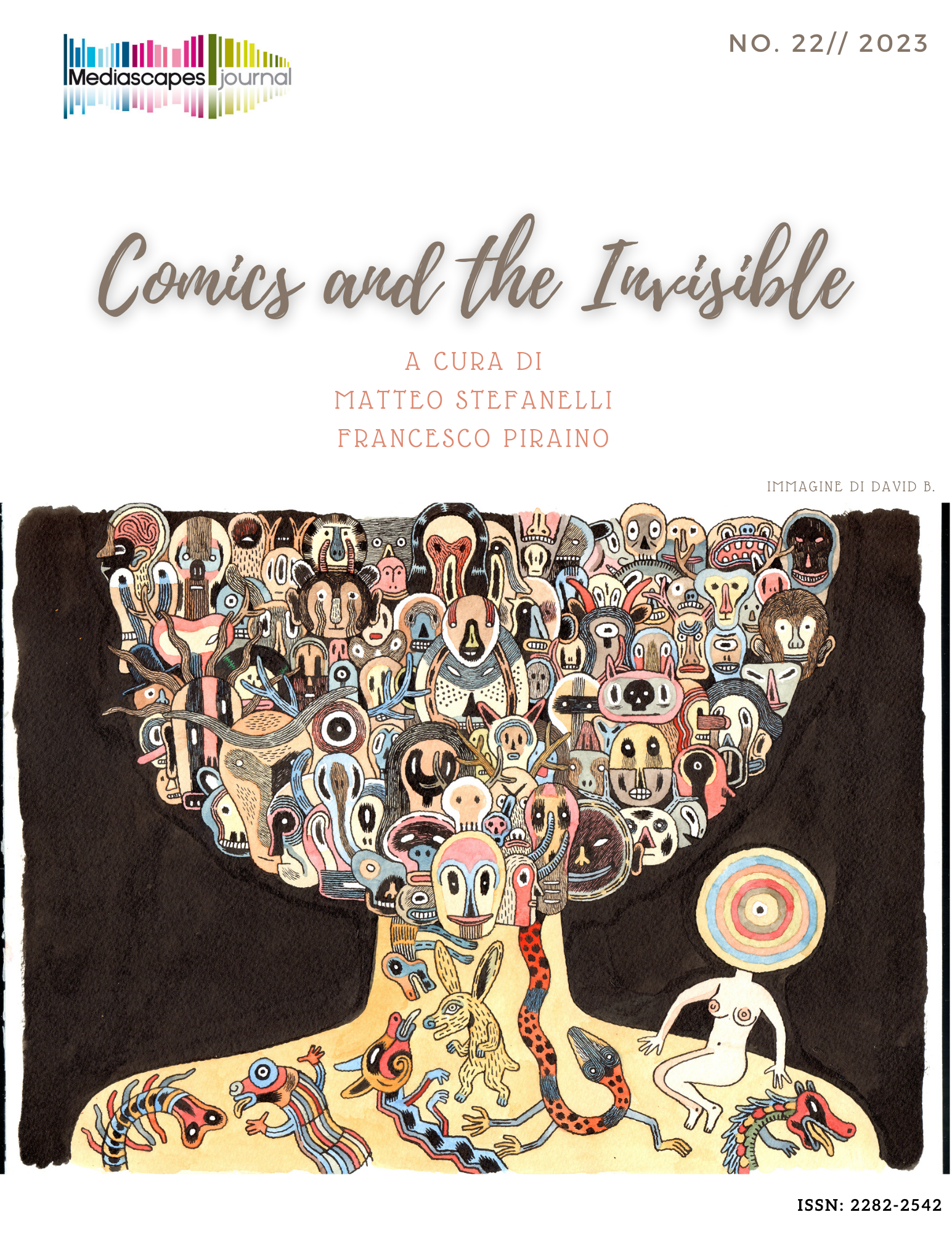Lived and abandoned spaces
Invisibilities in comparison
Keywords:
Italian comics, province, spaces, hauntologyAbstract
The paper aims to propose a close reading of three non-serial comics, published in Italy after 2019, with a focus on the representation of spaces and the specific invisibilities they convey and communicate. The texts selected for the analysis are Malibu by Eliana Albertini, Padovaland by Miguel Vila, and 24/7 by Nova, as all three texts tell a story that takes place in a marginal environment such as the Italian province.
The paper will begin by defining the theoretical framework of reference, based on the geocritical perspective to literary texts (Tanca, Peterle) and the notion of hauntology proposed by Jacques Derrida and reworked by Mark Fisher. The analysis will begin by considering some general aspects of the representation of the province in the three comics, identifying the main features of that environment considered as a space-time.
The paper will then proceed to a comparison between commercial space and abandoned space: the ways in which these are represented will be analyzed, emphasizing the presences-absences that haunt the spaces, according to the hauntological perspective. These two typologies were chosen because they are exemplary, both within history and in the imaginary: non-place the former (Augé) and characterized by a system of rules, heterotopia the latter (Foucault), a place with a history and devoid of a regulating authority.
From the analysis it will be possible to define some of their peculiar characteristics: the commercial space will emerge as an environment that seeks to impose a precise temporality that is always the same; on the other hand, the abandoned place will be opposite but still in a dialectical relationship with the former, as it is unregulated and capable of hosting a temporality different from that of the rest of the provincial environment. These presences will be related to the question of visibility: the commercial space will emerge as overseer, endowed with a gaze, while the abandoned place is itself invisibilized and thus capable of hiding those who pass through it from the gaze of the province. This analysis finds its ideal field of study in the comics medium for several reasons: the invisible is an integral part of the grammar of comics (McCloud, Rey) and by its very nature it is forced to carefully select what it includes in its spaces (panels and pages) (Barbieri) leaving ample space for what it excludes, which remains invisible but nonetheless present; on the other hand, comics, as a visual medium, represent the story in a space, more or less mimetic with respect to what we call reality. This characteristic allows us to relate the representations, to map places both physical and belonging to the imaginary (Peterle) and to propose an analysis that is also a comparison of the different forms of invisibility related to the places of our imaginary, lived and visible, abandoned and invisible, and the possibilities that comics offer to tell them.
Downloads
Published
How to Cite
Issue
Section
License

This work is licensed under a Creative Commons Attribution 4.0 International License.
Mediascapes Journal is published under a Creative Commons Attribution Licence 4.0.
With the licence CC-BY, authors retain the copyright, allowing anyone to download, reuse, re-print, modify, distribute and/or copy their contribution. The work must be properly attributed to its author. It should be also mentioned that the work has been first published by the journal Anuac.
Having published these contributions for the first time, Mediascapes Journal will have the right to publish them integrally or partially as reprints or possibly as part of a thematic issue, in both digital and printed format.
It is not necessary to ask further permissions both to author or the journal.


